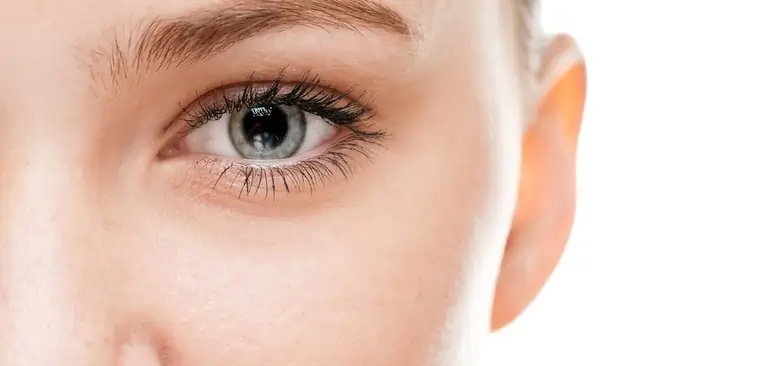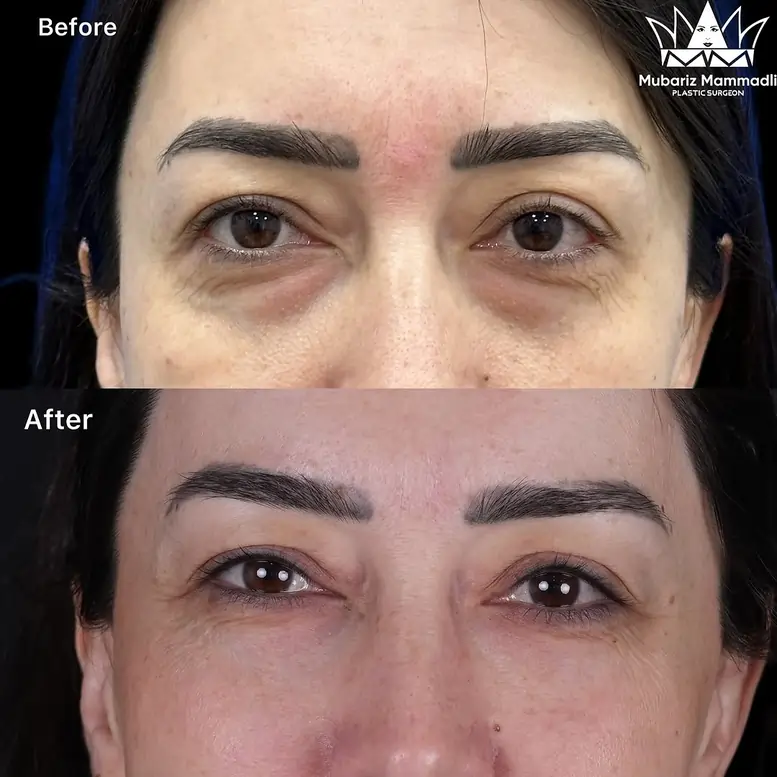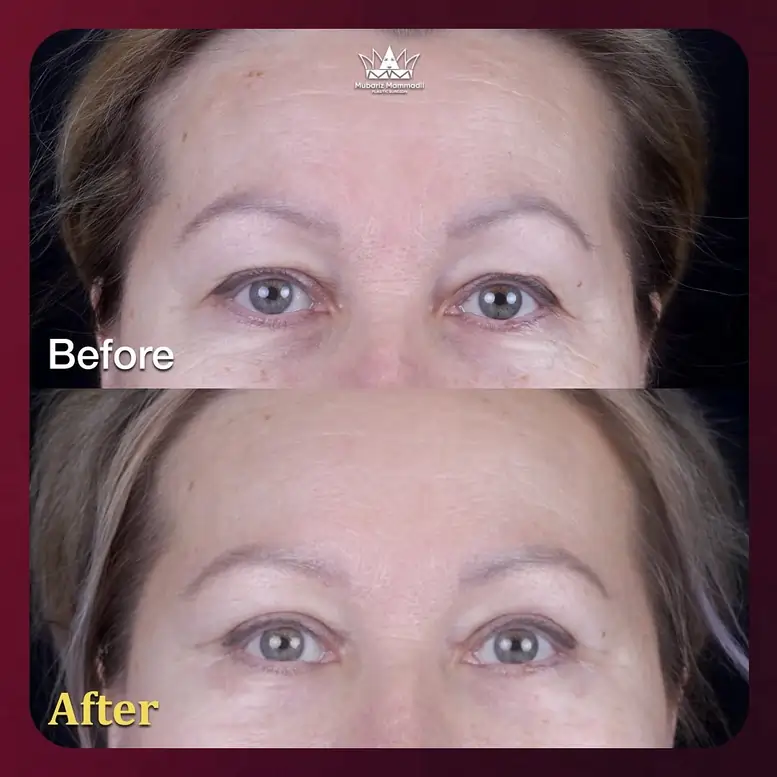Contents
- Michael Jackson Skin Color: The Truth Behind His Transformation
- Bella Hadid Before and After: What Cosmetic Procedures Has She Had?
- Scars After a Deep Plane Facelift
- Non-Surgical Facelift with Morpheus8: Advanced Skin Tightening
- Kesselring’s Lip Surgery ( Direct lip Lift)
- “Preservation Deep Plane Facelift™ by Dr. Mubariz” Natural, long-lasting rejuvenation using the most advanced anatomical techniques.
- From Hidden to Honored: A Neckline That Reflects Your True Self
- Azerbaijani Aesthetic Surgery on the Global Stage-Dr.Mubariz Mammadli
- Neck Lift Surgery cost, before and after, scars & more
 Lower Blepharoplasty
Lower Blepharoplasty
They say the eyes are the window to the soul—but what if those windows appear tired, puffy, or aged, even when you feel full of life inside? For many people, the lower eyelids are the first area of the face to show signs of aging. Puffiness, sagging skin, or deep under-eye bags can make us look more fatigued or older than we really are. In a world where first impressions matter, Lower Blepharoplasty offers a subtle yet highly effective way to restore clarity, youth, and confidence to your gaze.
What is Lower Blepharoplasty?
Lower blepharoplasty is a surgical procedure that rejuvenates the appearance of the lower eyelids. Its main goal is to:
Remove or reposition fat that causes puffiness
Eliminate excess skin
Tighten the underlying muscles
Smooth out wrinkles and fine lines
This procedure doesn’t dramatically change your face—it enhances it. It helps you look like a more rested, refreshed version of yourself.
Lower Blepharoplasty before and after
Transconjuctival lower blefaroplasty postop 2 years.
Upper and lower eyelid blepharoplasty PostOp 1 month .🌟

Lower Blepharoplasty cost
The cost of lower eyelid surgery typically ranges from $4,000 to $6,500. Upper eyelid procedures generally cost between $3,000 and $4,500. If you’re considering surgery on both the upper and lower eyelids, the combined cost usually falls between $7,000 and $9,000.
We understand that deciding to undergo eyelid surgery is a significant investment of both time and financial resources.
Questions about the cost of plastic surgery are among the most common we receive — and it's certainly an important topic to discuss. When choosing a surgeon for your blepharoplasty, be sure to look for a board-certified professional who offers reasonable pricing and delivers natural-looking results.
Why Do We Develop Under-Eye Bags?
As we age, the natural support structures around our eyes—such as skin, muscle, and connective tissue—weaken. Fat that was once held firmly in place can start to bulge, creating that classic "under-eye bag" appearance. Other contributing factors include:
Genetics
Sleep habits
Fluid retention
Sun exposure
Stress and lifestyle
Unfortunately, no amount of concealer or eye cream can fix structural issues beneath the skin. That’s where lower blepharoplasty becomes an option.
How is the Procedure Performed?
The procedure is typically done under local anesthesia with light sedation, or in some cases, general anesthesia. Depending on the patient’s needs, the surgeon will choose one of two approaches:
Transcutaneous Approach:
An incision is made just below the lower lash line. Through this incision, excess skin and fat are removed or repositioned. This method allows access to both fat and skin layers.Transconjunctival Approach:
The incision is made inside the lower eyelid, leaving no visible scar. This technique is ideal when skin removal isn’t necessary—only fat needs to be adjusted.
The entire surgery usually takes between 45 minutes to 1.5 hours, depending on complexity.
Recovery: What to Expect
Recovery is generally smooth and relatively quick:
Day 1–3: Swelling and bruising peak. Use cold compresses and keep your head elevated.
Day 4–7: Swelling starts to subside. Stitches (if external) may be removed.
After 1 week: Most people feel comfortable returning to work and light activities.
Full results can be seen after several weeks, with subtle improvements continuing for months.
You’ll be advised to avoid heavy lifting, intense exercise, and direct sun exposure for at least 2 weeks.
Benefits of Lower Blepharoplasty
Younger, refreshed appearance
Reduction or elimination of under-eye bags
Smoother, tighter skin under the eyes
Enhanced self-confidence
Long-lasting results (often 10 years or more)
Potential Risks (and How to Minimize Them)
Like all surgical procedures, there are potential risks, including:
Infection or bleeding
Dry eyes or irritation
Asymmetry or scarring (rare)
Difficulty closing the eyelids (temporary in most cases)
Choosing a board-certified plastic surgeon with experience in eyelid surgery significantly reduces these risks. Clear communication about your goals and medical history is also essential.
Who is a Good Candidate?
You may be a good candidate for lower blepharoplasty if:
You have visible puffiness or sagging under the eyes
You are in good overall health
You have realistic expectations
You do not have serious eye conditions
Final Thoughts
Lower blepharoplasty is not about changing who you are—it’s about bringing out the best version of you. It’s for those who look in the mirror and see tiredness that doesn’t match how they feel inside. With expert care and a thoughtful approach, this procedure can restore youthful vibrancy, balance facial harmony, and help you feel more confident in your own skin.
Your eyes tell your story. Make sure they reflect the energy, clarity, and strength you carry within.
 I, plastic surgeon Mubariz Mammadli, along with my team, professionally perform
I, plastic surgeon Mubariz Mammadli, along with my team, professionally performBreast lift surgery and other aesthetic-plastic surgeriesthroughout Azerbaijan and Baku.
İnstagram:@drmubariz